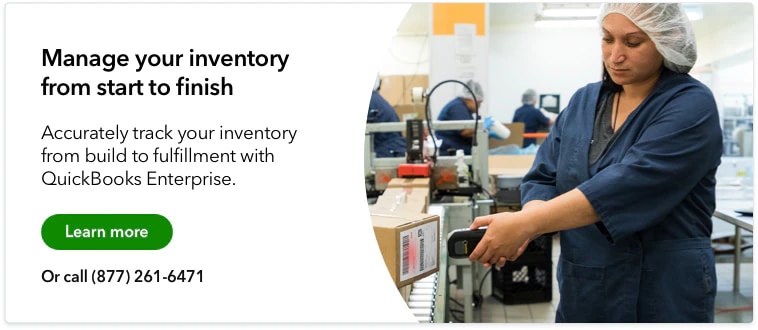Inventory encompasses all the parts and raw materials a business uses or sells. For growing businesses, efficiently utilizing inventory is necessary for controlling costs and protecting margins. This starts with properly classifying your inventory so you can make better decisions about inventory management.
We’ll cover six different types of inventory, then explore how you can classify and analyze them to maximize efficiency and improve your bottom line.
But first, let’s start with the basics.
What is inventory?
Inventory is just another name for the stock a business keeps. Conventional examples include the raw materials a manufacturing company holds, as well as the merchandise retailers sell. Classifying inventory allows a business to have the right items at the right time in the right quantity.
Understanding the different types of inventory and classifying them allows a business to reduce costs efficiently by not holding too much inventory, while maximizing sales by reducing stockouts. Inventory classification enables you to be laser-focused on the 20% of your inventory that generates 80% of your revenue.
Why is it important to classify inventory?
Some manufacturing businesses have thousands of items they need to keep track of and forecast demand for. If a business doesn’t know what items are essential for turning a profit, they could be wasting precious time with inessential inventory instead of their most profitable products or burning time and cash with other inefficient operations.
Accurate classification also saves employees time by simplifying inventory audits and cycle counts, freeing them up for higher-level tasks. With optimized inventory operations, stockouts are reduced, resulting in more customer satisfaction.
On the other side of the coin, classification helps businesses identify essential inventory and enables a business to go leaner with less important items, which frees up working capital for other needs.
Accounting benefits of inventory classification
Classifying inventory can be a lifesaver during tax time when accounting for Cost of Goods Sold (COGS), which ultimately tells you if your business was profitable. COGS is simply the total cost of buying or manufacturing your inventory. Classification also aids in smooth accounts payable and accounts receivable operations and a general ledger that balances out.
Throughout the fiscal year, properly classifying inventory enables a business to do cycle counts and create accurate reports for more efficient operations. Inventory audits are never fun, whether monthly, quarterly, or yearly, but classification makes them less painful.
Putting your inventory into the right buckets can make your accounting life much easier, but the types of inventory you hold can often depend on your inventory management philosophy.
How inventory methodologies affect inventory types
Choosing an inventory management strategy depends on the industry you operate in. For example, businesses that deal in raw materials and commodities might need to store large quantities of inventory, while a retailer or drop shipper might utilize a lean approach.
With that in mind, here are two simple inventory management methods:
Just in Time vs. Just in Case inventory
Just in Time (JIT) inventory is not an inventory type but a methodology in which materials are only purchased and received when necessary to manufacture a finished product—not before. Hence “just-in-time.” This system is commonly referred to as lean manufacturing since it significantly reduces the amount of inventory a business has at any given time.
JIT inventory management has a sister philosophy called Just in Case Inventory (JIC). With JIC, businesses store large stock levels to hedge against the risk of stockouts and uncertain customer demand. This helps prevent back orders, stockouts, and unhappy customers, but requires higher inventory costs.
Most companies lie somewhere in between the JIT and JIC extremes, depending on the industry they operate in. Wherever you land on the inventory management spectrum, all manufacturing businesses use common inventory types to identify their stocks. Manufacturing inventory follows the manufacturing process, starting with raw materials, then moving to work in progress, and finished goods.
Five inventory types with examples
Here are the five most common types of manufacturing inventory:
1. Raw Materials
Raw materials are the items manufacturers use to make their finished products. Raw materials can be commodities they buy on the open market or extract themselves or components that are used in manufacturing. For example, if you’re a bicycle manufacturer, you would consider processed steel — which you purchase from a steel fabricator — part of your raw materials inventory.
2. Work in progress (WIP)
Work in progress inventory (WIP) is the material waiting to be completed as a finished product. If you’re a bicycle manufacturer, all of the unfinished bikes in your shop could be considered WIP inventory. WIP is not raw materials or finished goods; they’re somewhere in the middle and thus get the WIP designation. Think of all the materials being used on a factory floor as WIP inventory.
3. Finished Goods
Finished goods are items that are ready to be sold. They’ve been manufactured from your raw material, passed inspection, and are waiting for your customers to purchase them. For accounting purposes, finished goods are combined with raw materials and WIP inventory to make up the total inventory line item on a balance sheet. If you were a bicycle manufacturer, the complete bikes would fit into finished goods.
4. Packing Materials
This inventory type includes any materials your business uses to pack the products you sell. If you make toothpaste, the tube you put the toothpaste in could be classified as packing materials. Any boxes or packaging you use to ship or store your products are packing materials as well.
5. MRO Supplies
MRO inventory is an acronym for maintenance, repair, and operating supplies. These are inventory items that you use to keep your factories running smoothly. MRO goods can include things like employee uniforms, cleaning, and office supplies, as well as any materials you use to repair or maintain manufacturing equipment.
This inventory type is critical to keeping operations running and makes up a large percentage of total factory purchases. Still, as a category, it’s often overlooked when it comes to inventory control.
6. Finished goods ready to be sold
If you have inventory that consists solely of finished products, this can be classified as merchandise inventory. When it comes to accounting, finished goods are marked as a current asset.
In retail inventory management, businesses use an inventory type called finished goods ready to be sold. This is different from finished goods in manufacturing because they’re finished items purchased for retail selling or wholesale. For example, the clothes a fashion retailer acquires are always ready to be sold upon arrival, whereas finished goods by manufacturers were once raw materials and a work in progress before being ready to be sold.
Retailers can measure the efficiency of this inventory using Gross Margin Return On Investment (GMROI), which involves dividing gross margin (profit) by average inventory cost over a certain period.
Four classifications of inventory stock
As a business owner, one of your biggest nightmares is missing out on sales because of stockouts. Not only does this cut into potential revenue, but it can also hurt relationships with loyal customers.
Fortunately, classifying your stock into the proper categories can help you make data-driven decisions and mitigate the risks of stock outs as well as overstock.
1. Safety Stock
Safety stock is inventory that is always held to reduce the risk of a stockout or manufacturing downtime. It’s also called buffer, hedge, or fluctuation stock. Think of safety stock as insurance for when demand spikes or there’s a materials shortage.
Safety stock ensures that in-demand or hard-to-supply items are available to customers or your manufacturing operations. Of course, there are higher inventory costs when you hold safety stock, but customers are more satisfied with the lower stockout rates
2. Pipeline Stock
Pipeline inventory consists of items that are in transit, often by truck, rail, or air. Transit inventory is common for large manufacturing companies with complex supply chains like automakers. Some inventory can take up to a week or more to arrive and is counted as pipeline stock until the buyer receives the shipment. It helps to understand how much cash the buyer has tied up in inventory their business can’t sell yet.
3. Anticipatory Stock
Anticipatory stock is inventory a business acquires in anticipation of a demand or forecasted shortage spike. For example, a retailer might acquire anticipatory stock before the holiday shopping season. Or an analyst for a manufacturer might order anticipatory stock of raw materials when forecasting a spike in a commodity’s price.
4. Decoupling Stock
Decoupling inventory held by manufacturers to prevent production stoppages. Decoupling stock is a type of safety stock specific to manufacturers in that it prevents a stock out of any one item from grinding operations to a halt.
By keeping stock for each manufacturing process segment in reserve, one part won’t slow down or stop the others. In essence, you are decoupling each part of your manufacturing process from each other, so they aren’t dependent on each other to operate.
Inventory management best practices
Properly managing your inventory can make or break your business, so here are two critical best practices all businesses can utilize to keep their warehouses running efficiently and profitably.
1. Conduct regular inventory analysis
By analyzing the inventory that keeps your company profitable, you can improve cash flow, reduce stockouts, and keep customers satisfied.
One type of analysis that can measure inventory efficiency is an ABC analysis, which groups items into three categories (A, B, and C) based on their level of priority:
- A items: This is your inventory with the highest annual consumption value.
- B items: Inventory that sells regularly but not nearly as much as A items.
- C items: This is the rest of your inventory that doesn’t sell much, has the lowest inventory value, and makes up the bulk of your inventory cost.
ABC analysis lets you customize your cycle counting process, which optimizes inventory control for your unique needs. For example, you might decide that A items should be counted every month, while B items only need to be counted every quarter. QuickBooks Enterprise updates inventory counts in real-time with cycle counts, without requiring a business to shut down their warehouse.
2. Maintain efficient warehouse operations
Accurate cycle counts are difficult to execute without effective warehouse operations. Having standard operating procedures and workflows helps to keep the warehouse floor organized and running smoothly.
QuickBooks Enterprise supports warehouse logistics with the ability to track inventory down to the row, shelf, and bin. Businesses can also track products by lot number or serial number for precise inventory control. With the ability to find your items quickly, businesses can reduce human error and inaccurate counts.
3. Use a best-in-class inventory management system
QuickBooks Enterprise has all the tools you need to manage your inventory profitably, such as mobile barcode scanning, real-time tracking, and custom reporting.
For growing and complex businesses, Enterprise offers intuitive multi-level categorization across warehouses. Businesses can use up to four levels of inventory categorization, allowing users to view inventory by specific categories as well as bulk move items from one category to another. Plus, reduce spoilage and excess inventory by assigning expiration dates to inventory, allowing you to take action with expired inventory reports.
Final Thoughts
Proper inventory classification makes tracking inventory less stressful with properly labeled and stored items that you can prioritize and move efficiently to your customer’s doorstep.
With the right solution to meet inventory accounting challenges, you can make better reports, which leads to better business decisions. And with less time spent chasing down answers to inventory tracking mysteries, you can free yourself up to spend more time growing your business.















